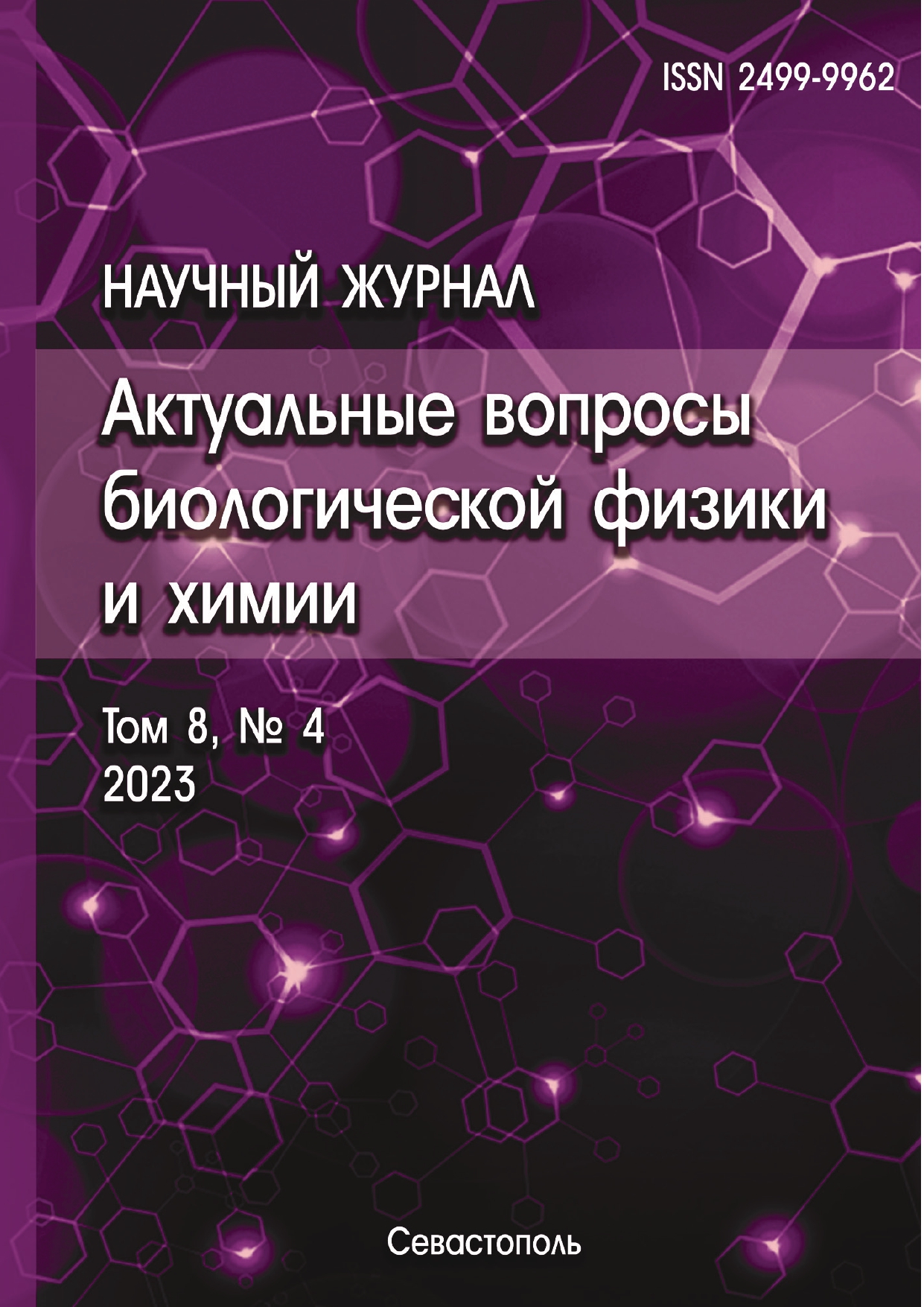Pushchino, Moscow, Russian Federation
Pushchino, Moscow, Russian Federation
Pushchino, Moscow, Russian Federation
Moscow, Moscow, Russian Federation
Moscow, Moscow, Russian Federation
The paper presents calculations of the dipole, polar, and electronic properties of helical nanostructures based on dileucine (LL) of different chirality (L, D) using the AM1, PM3 methods from the HyperChem software package. It has been shown that the physical properties of dileucine-based nanotubes are close to those of diphenylalanine nanotubes (FF PNT). For nanostructures based on dileucine of left chirality L-LL, the existing experimental data make it possible to isolate from crystallographic structures molecular nanostructures of helical nanotubes that have right chirality D, which corresponds to the law of chirality change upon transition to the next level of self-organization. Model helical structures of nanotubes based on dileucine of right chirality D-LL were also constructed, for which there are no experimental data. Calculations of chirality by the method of mixed vector-scalar product of dipole moments of dipeptides showed that the law of changing the type of chirality is also valid for model helical nanotubes based on the D-LL. These results can be the basis for the synthesis of new experimental nanostructures based on right-handed dipeptides.
amino acids, dipeptides, dileucine, peptide nanotube, chirality, dipole moment, molecular modeling, semi-empirical methods
1. Bystrov V.S., Zelenovskiy P.S., Nuraeva A.S. et al. Chiral Peculiar Properties of Self-Organization of Diphenylalanine Peptide Nanotubes: Modeling of Structure and Properties. Math. Biol. Bioinform., 2019, vol. 14, pp. 94-125. DOI: https://doi.org/10.17537/2019.14.94; EDN: https://elibrary.ru/HIAJTA
2. Bystrov V.S., Filippov S.V. Molecular modelling and computational studies of peptide diphenylalanine nanotubes, containing waters: Structural and interactions analysis. J. Mol. Model., 2022, vol. 28, pp. 1-24. DOI: https://doi.org/10.1007/s00894-022-05143-6; EDN: https://elibrary.ru/IESEBS
3. Zelenovskiy P.S., Nuraeva A., Kopyl S. et al. Chirality-Dependent Growth of Self-Assembled Diphenylalanine Microtubes. Cryst. Growth Des., 2019, vol. 19, pp. 6414-6421.
4. Leuchtag H.R. Voltage-Sensitive Ion Channels: Biophysics of Molecular Excitability. Springer, 2008, 529 p. DOI: https://doi.org/10.1007/978-1-4020-5525-6; EDN: https://elibrary.ru/SRCSGX
5. Bystrov V., Sidorova A., Lutsenko A. et al. Modeling of Self-Assembled Peptide Nanotubes and Determination of Their Chirality Sign Based on Dipole Moment Calculations. Nanomaterials, 2021, vol. 11, p. 2415.
6. Bystrov V., Paramonova E., Zelenovskii P., Kopyl S., Shen H., Lin T., Fridkin V. Photoelectronic Properties of Chiral Self-Assembled Diphenylalanine Nanotubes: A Computational Study. Symmetry, 2023, vol. 15, no. 2, p. 504. DOI: https://doi.org/10.3390/sym15020504; EDN: https://elibrary.ru/LRUPRC
7. HyperChem 8. Tools for Molecular Modeling. Professional Edition for Windows AC Release 8.0 USB (on CD). Gainesville, FL 32601 United States: Hypercube. Inc. 2011.
8. Bystrov V., Likhachev I., Filippov S., Paramonova E. Molecular Dynamics Simulation of Self-Assembly Processes of Diphenylalanine Peptide Nanotubes and Determination of Their Chirality. Nanomaterials, 2023, vol. 13, no. 13, p. 1905. DOI: https://doi.org/10.3390/nano13131905; EDN: https://elibrary.ru/DPTEUY
9. Tverdislov V.A. Chirality as a primary switch of hierarchical levels in molecular biological systems. Biophysics, 2013, vol. 58, pp. 128-132.
10. Gorbitz C.H. Nanotube formation by hydrophobic dipeptides. Chem. Eur. J., 2001, vol. 7, pp. 5153-5159.
11. Gorbitz C.H. A crystallographic titration of the dipeptide L-isoleucyl-L-isoleucine. Acta Crystallographica, 2004, vol. 60, pp. 569-577.
12. Gorbitz C.H. The structure of nanotubes formed by diphenylalanine, the core recognition motif of Alzheimer's B-amyloid polypeptide. Chemical Communications, 2006, vol. 22, no. (22), pp. 2332-2334.
13. Gorbitz C.H. Hydrophobic dipeptides: the final piece in the puzzle. Acta Section B: Structural Science, 2018, vol. 74, no. 3, pp. 311-318.
14. CCDC Home | CCDC [Electronic resource]. (accessed: 10.06.2023).










